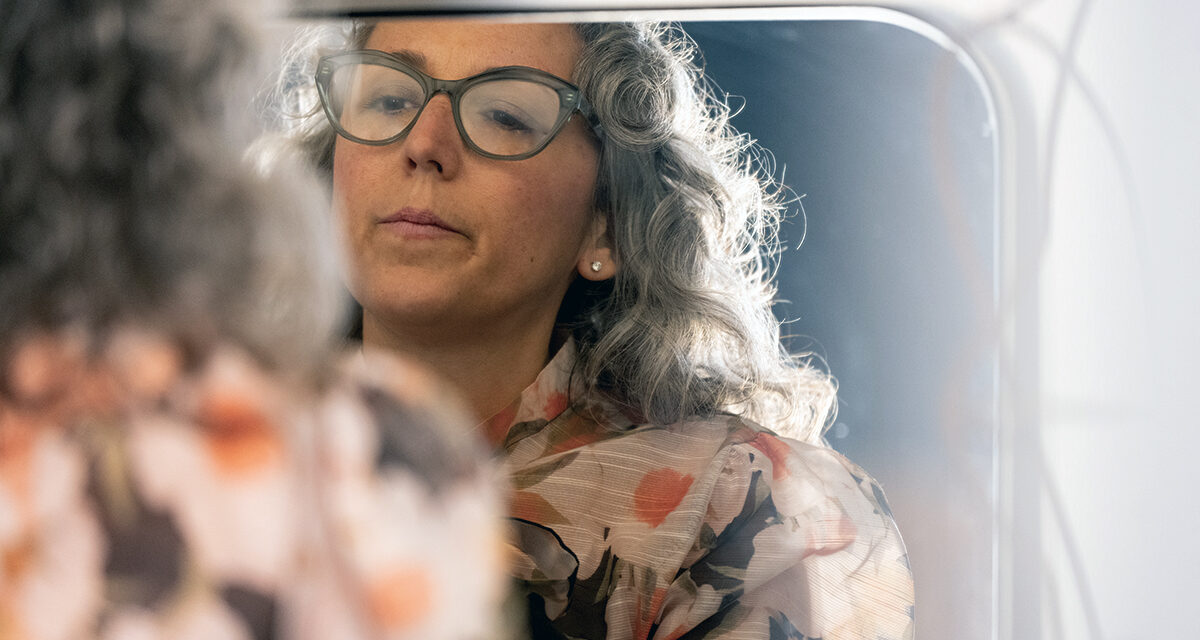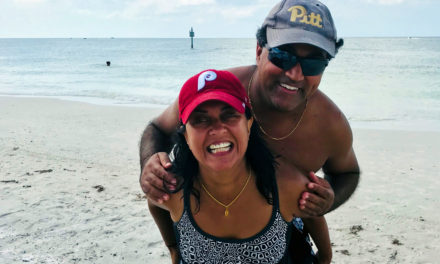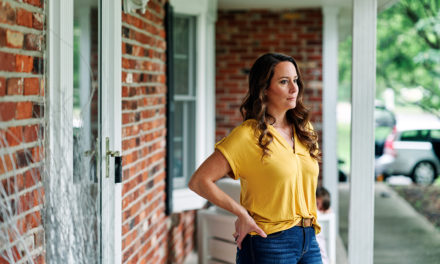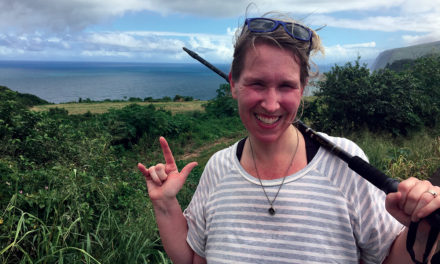The curator-in-chief built her art space to elevate and empower local artists, connect them with their community, and challenge conventional thinking.
Pushing the boundaries of societal norms is an art unto itself. People may use their physical appearance, verbal or written expression, or their way of life to buck convention. Ashara Shapiro chose her own distinct path, pulling together artists from all backgrounds and mediums of expression to encourage patrons to ask questions, self-reflect, and perhaps color outside the lines in their own lives.
And sure enough, one’s gears begin to turn once one steps inside ArtWRKD, the sunlit art collective space in Newtown, PA, that Shapiro opened in September 2022. Throughout the space, artists’ works thoughtfully (and often meticulously) adorn walls, tables, and shelves, including hand-crafted wearable art and jewelry in cases that Shapiro herself created. Mannequins don prolific fashion pieces that Shapiro created or commissioned for a fashion show or just to stretch her creative muscles.
Although her personal office in the back of ArtWRKD is slightly more scattershot, her palette of tools is on display (including Shapiro’s “favorite hammer” and a few vintage-looking fabric scissors), hanging on walls and settled on desks, offering clues about her artistic sensibility, style, and mandate to create. Creating, after all, is the whole point.
Before she died, my mom told me, ‘I want you to live a brave life.’ I spent time reflecting on what that meant for me in my life, and ArtWRKD is how that manifested.
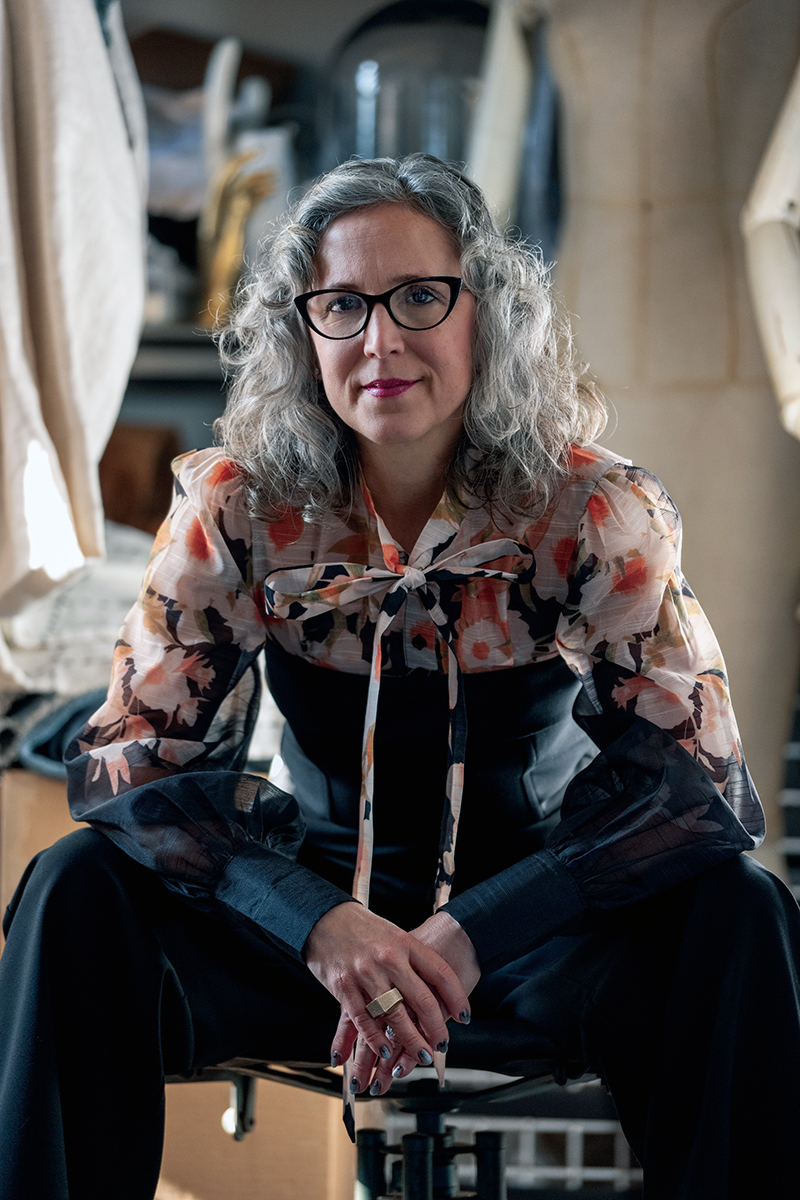
See Something, Say Something
No matter what is on display at any given moment, Shapiro is consistent in her drive to advocate for people (herself included) to live creatively and offer authenticity in artistic expression. Each work of art is curated in every sense, carefully chosen because of its honesty, daring, and contribution to a broader discussion that Shapiro wants to encourage and an envelope she wants to push.
Take Kev Von Holt’s painting Coffee Date, a piece from his antisocial media series depicting an all-too-familiar scene of technology dividing us one personal interaction at a time. The series is affecting to Shapiro because she “thinks there’s a conversation to be had about the feeling of a loneliness that happens when you’re not alone that is so prevalent in society right now,” she offers.
Wall to wall, floor to ceiling, so much of what’s happening inside ArtWRKD is personal to Shapiro. She also chooses each artist and specific pieces because they represent a kind of courage and daring to which she’s so drawn. “In many cases, exceptional work is unavoidable. These [curated] pieces are examples of vulnerable work, the things that are tucked away or part of an artist’s ‘process,’ not necessarily the ones they intended to show,” Shapiro explains. “And sometimes that is the most brilliant of all the work.”
Exhibits & Events
January 10–26
Exhibition Space
“Handmade Photographs,” a solo exhibition of photographer Mel Evans, exploring his deep commitment to the artistry and craftsmanship of traditional film photography. His work encompasses silver gelatin prints and enlargements, as well as hand-coating paper for contact printing in alternative processes, such as platinum/palladium.
Workshop Gallery
“Heroes of the Holocaust” is a special project in collaboration with fabric-assemblage artist Meryl Lettire. Heroes of the Holocaust is a traveling art exhibition that honors the stories of creative resilience during one of the darkest periods of human history. The series consists of 20 to 25 portraits, each a fabric assemblage that tells the story of individuals who, despite facing unimaginable hardships, found solace, strength, and a voice through their art.
February 7–23
Exhibition Space
“The Uncanny Valley of Everyday Life” is artist Margaret Koval’s debut solo exhibition with the gallery. This captivating series of new paintings offers a profound exploration of the disquieting and surreal landscape of contemporary America, presenting an arresting gaze into the deep strangeness of where we live now.
Workshop Gallery
“Belonging,” a group exhibition, explores the concept of human connection, cultural identity, and the often complex feelings of acceptance, isolation, and existence in the in-between spaces.
March 7–30
Exhibition Space
“It Takes The Village (The Ugly Girl Diaries, Redux)” is a special project in collaboration with Katee Boyle, an installation and mixed media artist.
Workshop Gallery
Dauntless, a group exhibition of female and female-identifying artists, which explores the tension between containment and limitless possibility, celebrating the ongoing pursuit of liberation.
Mind of the Maker
Shapiro’s brain is constantly buzzing, looking for ways to challenge conventional thinking. Growing up in Marin County, CA, her response to being told she couldn’t do something was (and is) to double down. “I was always told, ‘You’re too headstrong.’ The world at large told me, ‘You’re too opinionated’ or ‘You’re on your soapbox.’ I wasn’t afraid to vocalize my opinions,” Shapiro says. “Over time, that’s manifested in asking questions and challenging the norms: Why can’t women be louder or more reckless than men? Why can’t we take more risks than men?”
Her parents realized early on in her life that Shapiro was intent on questioning societal rules and standards. They also saw how talented she was and how hard she worked. For example, Shapiro didn’t follow the audition format to get into the acting school at Emerson University in Boston, but she did get in, finished her BFA in acting and theater education in 3 years, decided to add a teaching major, and graduated with magna cum laude honors. “My parents knew I was stubborn and driven by nature, but they also knew I was kind of the fixer of the family,” she says. “They didn’t ever try to change me.”
In 2022, Shapiro’s mom was diagnosed with stage IV colon cancer, and she died just 19 days later. In those 19 days, their time together became pivotal in Shapiro’s life. “Before she died, my mom told me, ‘I want you to live a brave life.’ I spent time reflecting on what that meant for me in my life, and ArtWRKD is how that manifested,” Shapiro says, biting back emotion.
Soon after returning from California after the passing of her mother, Shapiro, who lives in Newtown with her husband and their 17-year-old daughter and 15-year-old son, heard from a friend who wanted to show her a nearby space that might be a fit for some of her aspirations. Sure enough, it became the home of the art collective and gallery space she had long wanted to create. It was the perfect vessel to bring to fruition a collective that would explore diverse forms of art from creative people and introduce them to the community. “ArtWRKD is an inclusive space that showcases art as a healing source for the artist, for the patron, and for the community. It’s about art as a catalyst for reflection, art as a historical representation,” Shapiro says. “It’s great to look at and admire art, but the thing that’s often missing in my mind is, How are we making the art more important? How are we challenging our thinking?
How are we fostering connections?”
That last part pushes the space beyond what we think of as a local art gallery and curated artist boutique—ArtWRKD fosters connections between artists, hosts artists’ speaker series, and offers workshops like introductions to pottery, pastels, and creative writing. It is intent on being the community’s creative conduit.
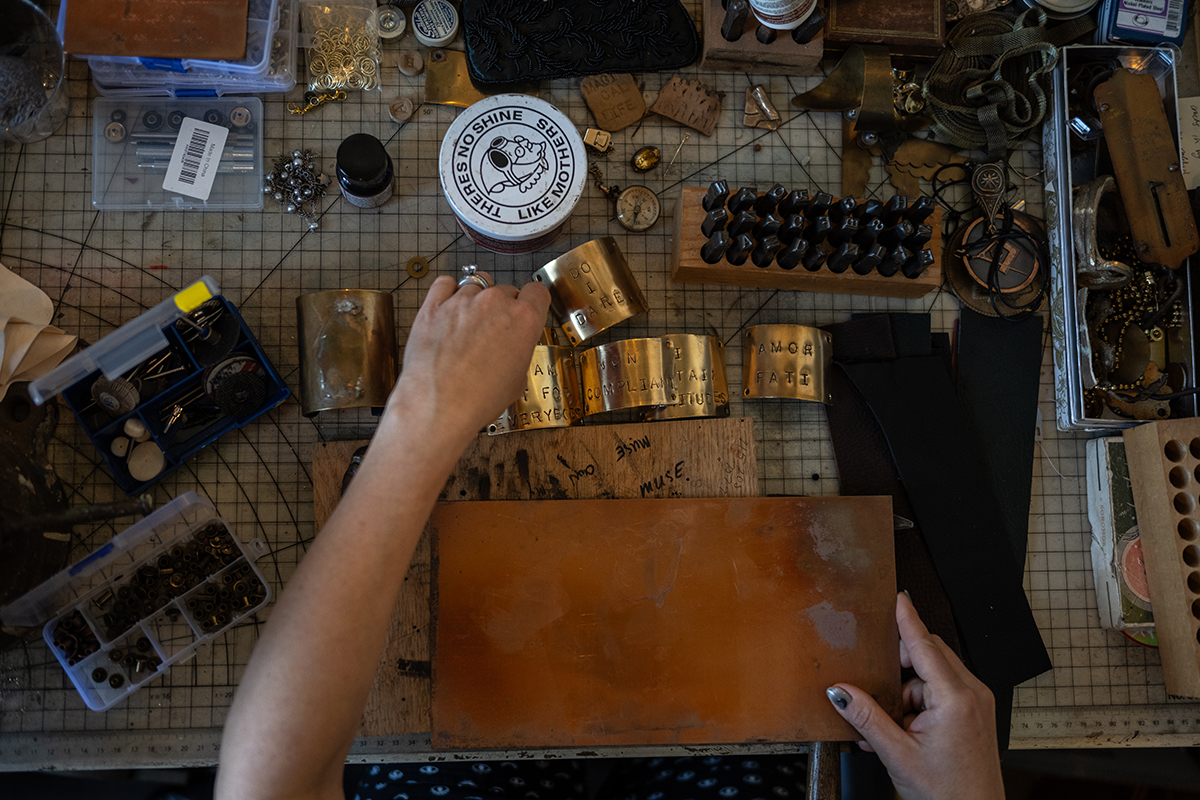
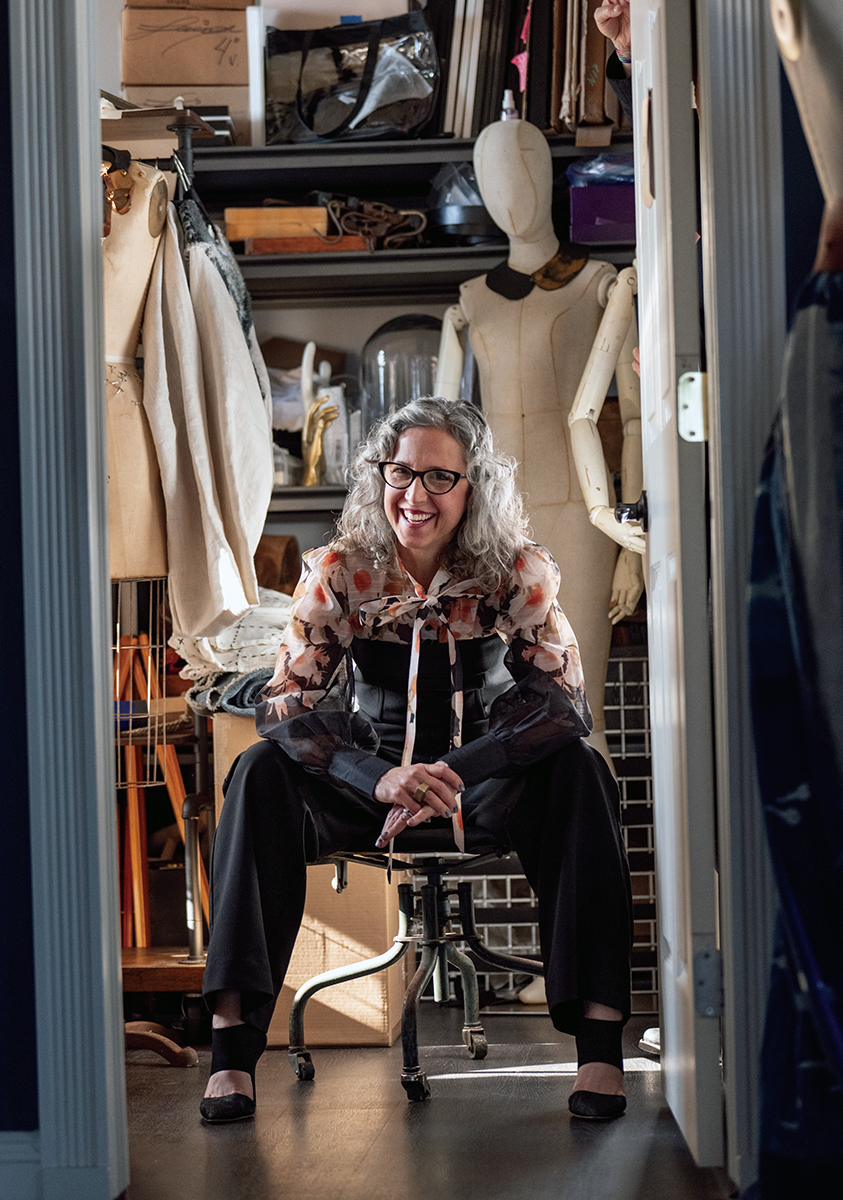
Elevating Art
Shapiro is also the owner and artist behind A. Recherche, which makes wearable art, including a collection inspired by Henry Mercer that is housed in the Mercer Museum in Doylestown, PA. And while Shapiro does create, display, and sell many of those pieces at ArtWRKD, represented artists take center stage in the space, which is a collective in every sense. The perception that artists are all in competition with each other for attention and for patrons’
dollars is a missed opportunity, she says. “There’s a misnomer that we have in a society in which we look at success in terms of who is the artist that we’re talking the most about or the one that is most in the spotlight,” Shapiro says. “In actuality, the more supportive we are and the more we talk about one another, the more we all rise together. I owe it to artists for them to be my primary focus. I’ve made that choice to be the secondary focus by creating this space because this is what I’ve put out in the universe.”
In part because of the kind of work she chooses to represent and because of her overall mission and mantra, Shapiro is protective of her artists and their work. “I’m like the mama of the gallery. When you want the best and greater good for the people around you, you must guard it,” Shapiro says. “I know that being an artist is really difficult. But I’m a firm believer that great art is a calling. There is art that is technically fabulous, but for me the most exceptional is the work you can’t avoid. That bravery piece is to put yourself there, which people are sometimes afraid of because it’s where you are the most vulnerable.”
Shapiro has a million plans for ArtWRKD, droplets of which are constantly percolating. Although she tends to focus on the ideas that are the loudest in her head, she also has her finger on the pulse of the community and society to keep the work relevant, meaningful, and hard charging. “I just follow the things that are happening and I’m organically following,” she explains. “Nothing about this space is linear—and nothing about my mind is linear.

